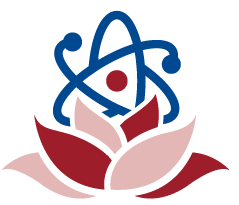| macula སེར་ཐིག | biol. An oval yellowish area surrounding the fovea near the centre of the retina in the eye, which is the region of keenest vision. | མིག་གི་དྲ་སྐྱིའི་ལྟེ་བའི་འགྲམ་དུ་ཡོད་པའི་དོང་ཆུང་གི་མཐའ་རུ་སྐོར་བའི་སེར་མདོག་གི་སྒོང་དབྱིབས་ལྟ་བུའི་ཆ་ཤས་ལ་གོ འདི་ནི་མཐོང་ཚོར་རྣོ་ཤོས་ཀྱི་གནས་དེ་ཡིན། |
| macroscopic properties མཐོང་རུང་ཁྱད་ཆོས། | phys. An attribute or observable property of a thermodynamic system that can be characterized by a single quantity which is applicable to the system as a whole, or which is a function of position within the system and is continuous so long as it does not vary rapidly over microscopic distances, except at the boundaries of the system. Examples of macroscopic properties are temperature, pressure, volume, density, viscosity, and concentration. | དྲོད་ཤུགས་རིག་པའི་མ་ལག་ཅིག་གི་རང་བཞིན་ནམ་མཐོང་རུང་ཁྱད་ཆོས་ཤིག་ལ་གོ་ཞིང་། ཁྱད་ཆོས་དེ་ཡང་མ་ལག་ཡོངས་ལ་ཁྱབ་པའམ། མ་ལག་དེའི་མུ་མཚམས་མ་བརྒལ་ཚེ་རྒྱང་ཐག་ཕྲ་མོའི་དབར་ལ་འགྱུར་བ་མྱུར་མོ་མེད་ཅིང་ཆ་སྙོམས་སུ་ཁྱབ་པ་ཞིག་ལ་གོ དཔེར་ན། དྲོད་ཚད་དང་། གནོན་ཤུགས། བོངས་ཚད། སྟུག་ཚད། ཚི་ཤུགས། གར་ཚད་བཅས་ནི་མཐོང་རུང་ཁྱད་ཆོས་ཀྱི་དཔེ་མཚོན་ཡིན་ནོ། |
| macroscopic གཟུགས་རགས་པའི། | phys. Observable by the naked eye | མིག་རྗེན་པས་མཐོང་ཐུབ་པའི་གཟུགས། |
| macrophage རགས་ཟ། | biol. One type of phagocyte of the immune system that can ingest bacteria and cell debris and coordinate tissue repair. They form from monocytes, which circulate in the blood, migrate to sites of cell damage and differentiate into macrophages. | ནད་འགོག་མ་ལག་གི་ཟ་བྱེད་ཕྲ་ཕུང་གི་རིགས་གཅིག་སྟེ། སྲིན་འབུ་དང་ཕྲ་ཕུང་གི་བཤིག་རོ་རྣམས་ཟ་ཐུབ་ཅིང་། ཕུང་གྲུབ་བསྐྱར་བཟོའི་འབྲེལ་མཐུད་བྱེད་ཐུབ་མཁན་ཞིག་ཡིན། རགས་ཟ་ནི་གཅིག་ལྡན་ཕྲ་ཕུང་ནས་གྲུབ་ཀྱི་ཡོད་པ་སྟེ། གཅིག་ལྡན་ཕྲ་ཕུང་དེ་དག་ཁྲག་གི་ནང་དུ་རྒྱུ་ཞིང་ཕྲ་ཕུང་སྐྱོན་ཅན་གྱི་ཁུལ་དུ་གནས་སྤོ་བྱས་ཏེ་རགས་ཟ་རུ་ཁྱད་འགྱུར་འགྲོ་བ་ཡིན། |
| macroparticle རྡུལ་རགས་པ། | phys. | |
| macronutrient རགས་བཅུད། | biol. A substance required in relatively large amounts for the normal growth and development of an organism. Macronutrients for animals include fat, carbohydrate, and protein, while for most plants they include chemical elements such as carbon, hydrogen, oxygen, nitrogen, and phosphorus. | སྐྱེ་དངོས་ཤིག་གི་རྒྱུན་ལྡན་གྱི་སྐྱེད་འཕེལ་དང་འཚར་འཕེལ་ལ་ལྟོས་བཅས་ཀྱི་འབོར་ཚད་ཆེན་པོ་མཁོ་བའི་དངོས་རྫས་ལ་གོ་ཞིང་། སྲོག་ཆགས་ལ་མཁོ་བའི་རགས་བཅུད་ནི་ཞག་ཚིལ་དང་། ཁར་སྦོ་མངར་བཅུད། སྤྲི་རྫས་བཅས་ཡིན་པ་དང་། རྩི་ཤིང་ལ་མཁོ་བའི་རགས་བཅུད་ནི་ཁར་སྦོན་དང་། ཡང་རྡུལ། འཚོ་རླུང་། ཟེ་རླུང་། འོད་ཀྱི་མ་མ་ལྟ་བུ་ཡིན། |
| macromolecule འདུས་རྡུལ་ཆེན་མོ། | biol. A large molecule typically containing more than about 1000 atoms. Polymers are the commonest examples of macromolecules. | རྡུལ་ཕྲན་ ༡༠༠༠ ལས་ལྷག་ཙམ་གྱིས་གྲུབ་པའི་འདུས་རྡུལ་ཆེན་པོ་ཞིག་ལ་གོ་ཞིང་། ཟློས་རྫས་ནི་ཧ་ཅང་ཡོངས་གྲགས་ཆེ་བའི་འདུས་རྡུལ་ཆེན་མོའི་དཔེ་མཚོན་ཡིན། |
| Macromere མྱུག་ཕུང་ཆེ་བ། | biol. | |
| macroevolution འཕེལ་འགྱུར་ཆེན་མོ། | biol. Large-scale evolution occurring over a very long period time that results in the formation of new species and higher-level taxonomic groups. | དུས་ཡུན་ཧ་ཅང་རིང་པོ་ཞིག་གི་རིང་ལ་བྱུང་བའི་གཞི་རྒྱ་ཆེ་བའི་འཕེལ་འགྱུར་ཞིག་ལ་གོ་ཞིང་། འདི་ལ་བརྟེན་ནས་ཉེ་རིགས་གསར་པ་དང། རིམ་པ་མཐོ་བའི་དབྱེ་བསྡུའི་སྡེ་ཚན་གྱི་སྲོག་ཆགས་གྲུབ་ཀྱི་ཡོད། |
| Macrocosm རགས་པའི་འཇིག་རྟེན། | biol. | |
| Machine learning འཕྲུལ་སྦྱོང་། | compt. | [འཕྲུལ་རིག་ཤེས་སྦྱོང་།] |
| machine འཕྲུལ་ཆས། | phys. Device for increasing (or decreasing) a force or simply changing the direction of a force. | ཤུགས་ཚད་སྤེལ་བར་ (ཡང་ན་འཕྲི་བར་) བྱེད་པའམ་ཡང་ན་སྟབས་བདེའི་ངང་ཤུགས་ཀྱི་ཁ་ཕྱོགས་ལ་འགྱུར་བ་གཏོང་བའི་ཡོ་ཆས། |
| Mach number མག་གི་གྲངས། | phys. | |
| macaque monkey སྤྲེའུ་མེ་ཀག | biol. | |
| m/s སྐར་ཆ་རེར་བགྲོད་པའི་མི་ཊར། | phys. | |
